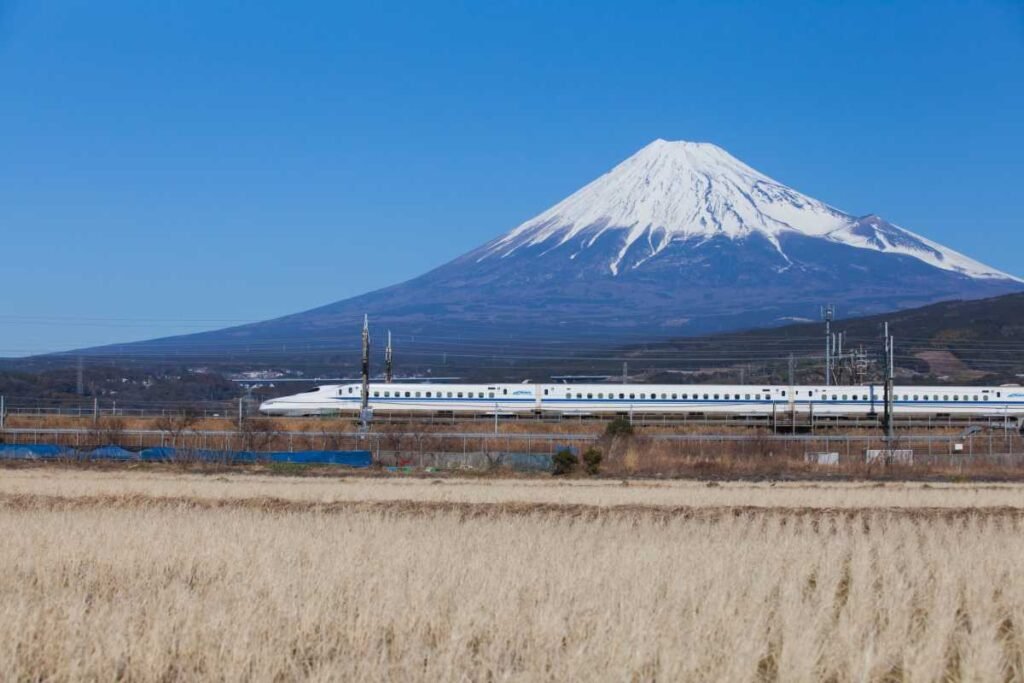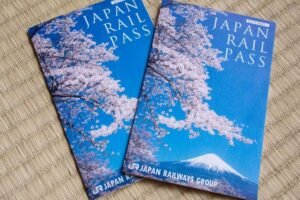Japan is a country that practically runs on trains. From the ultra-punctual shinkansen (bullet trains) to local commuter lines connecting even the smallest towns, the rail network is the backbone of national transportation. For travelers visiting Japan, one of the most important—and potentially most confusing—tools is the Japan Rail Pass, commonly known as the JR Pass.
Originally introduced to promote tourism and ease travel across the country, the JR Pass has long been seen as the golden ticket for foreign visitors. But with recent price hikes and changing travel patterns, it’s no longer a one-size-fits-all solution. In this article, we’ll explain what the JR Pass is, how it works, who should buy it, and when it’s actually worth the investment.
Table of contents
What Exactly Is the JR Pass?
The Japan Rail Pass is a special ticket offered exclusively to foreign tourists visiting Japan under a temporary visitor status. Issued by Japan Railways Group (JR Group), it provides unlimited travel on most JR-operated trains, buses, and ferries for a fixed period: 7, 14, or 21 consecutive days.
The JR Pass is often touted as the most economical way to explore Japan, especially for travelers planning to visit multiple cities such as Tokyo, Kyoto, Osaka, and Hiroshima. With just a few bullet train rides, the pass can practically pay for itself. It also simplifies the experience by allowing unlimited travel within the designated period, removing the need to constantly buy individual tickets or worry about fluctuating prices.
But not all trains are included, and not every type of traveler needs one. Understanding how the JR Pass works is crucial to deciding whether it fits your itinerary or if you’re better off with regional passes or individual tickets.
How Much Does It Cost and What Types Are Available?
As of mid-2025, the JR Pass has undergone significant price changes that have made it less of a “must-have” for every traveler. The current prices for the Standard (Ordinary Class) JR Pass are approximately:
- 7 days: ¥50,000 (around €290 or $330)
- 14 days: ¥80,000 (around €460 or $530)
- 21 days: ¥100,000 (around €570 or $660)
There is also a Green Car version, which provides access to more spacious and comfortable seats. These cost around 30% more than the standard pass.
While the prices may seem steep, a round trip from Tokyo to Hiroshima and back can already cost around ¥40,000 on its own. Add trips to Kyoto or Kanazawa, and the value of the pass becomes more evident. Still, it’s no longer the automatic bargain it once was, especially for those staying in just one region or city.
What Trains and Services Are Included?
The JR Pass covers a wide range of transportation options operated by the JR Group, which includes several regional rail companies across the country. Here’s what you can access:
✅ Shinkansen (Bullet Trains) – Most shinkansen lines are included, except the Nozomi and Mizuho services, which are the fastest options on the Tokaido and Sanyo lines. Instead, pass holders can use the Hikari, Sakura, and Kodama trains.
✅ Limited Express, Express, and Local JR Trains – This includes commuter lines like the Yamanote Line in Tokyo and the Loop Line in Osaka.
✅ JR Buses and the JR Miyajima Ferry – Including the ferry from Hiroshima to Miyajima Island.
❌ Not Included – Private railways (like Keio or Odakyu), subways, and metro systems not operated by JR.
It’s important to check each leg of your trip and make sure your chosen trains are eligible. JR also offers an online booking system where pass users can reserve seats in advance, often at no additional cost.
When Does It Make Sense to Buy the JR Pass?

The JR Pass is most valuable for travelers planning to cover long distances within a short time. Here are some scenarios where the pass pays off:
- Visiting 3 or more cities across different regions within 7–14 days
- Doing a round trip between Tokyo and Hiroshima or Kyushu
- Planning spontaneous travel without fixed dates or pre-booked tickets
- Staying outside Tokyo and commuting frequently on JR lines
On the other hand, if you’re only staying in Tokyo, Kyoto, or Osaka, and don’t plan to move around much, the pass is likely not worth it. In such cases, regional passes like the JR Kansai Area Pass or Tokyo Wide Pass might offer better value and flexibility.
To evaluate the cost-benefit accurately, you can use free fare calculators like Hyperdia or Japan Travel by Navitime, which help simulate your itinerary and estimate total transportation costs.
How and Where Can You Buy and Use It?
The JR Pass used to require buying an “exchange order” outside Japan and then activating it upon arrival. That changed in recent years. Now there are two main options:
- Buy Online (Official JR Pass Website)
You’ll receive a QR code, and upon arrival in Japan, you can exchange it at major train stations or airports for the actual pass.
Pros: Online reservations, direct activation, no paperwork.
Cons: Slightly more expensive than buying through travel agents. - Buy from Authorized Travel Agencies
Agencies outside Japan (or online resellers) often offer slightly better prices but require you to pick up the pass in Japan with your passport.
Once activated, the pass must be used on consecutive days—you can’t pause it. At stations, instead of going through the ticket gates, show your pass to the staff at the manned gate.
You can also reserve seats at Midori no Madoguchi ticket offices or at ticket machines. Reservations are highly recommended during peak seasons (Golden Week, Obon, and New Year).
Final Tips Before You Use the JR Pass
- Carry your passport: JR staff may ask for ID to confirm you’re eligible to use the pass (tourist visa only).
- Book in advance during busy periods: Even with a pass, seats can sell out on popular routes.
- Download useful apps: Tools like Navitime, Google Maps (with transit), and Jorudan can help you plan routes in real time.
- Combine with an IC Card: For non-JR lines (like Tokyo Metro), get a Suica or Pasmo card to make local travel seamless.
The JR Pass is not just a ticket—it’s a gateway to experiencing Japan’s famous rail culture and exploring the country at high speed. But with rising prices and more options available, it pays to research thoroughly and make sure it fits your specific travel plans.
Conclusion
The JR Pass remains one of the most iconic travel tools in Japan, offering convenience and flexibility to those exploring the country. However, with shifting prices and evolving regional options, it’s no longer a no-brainer purchase for every visitor. Carefully mapping out your route, understanding what the pass includes, and comparing it with alternatives will help you decide whether this legendary rail pass deserves a spot in your suitcase.













